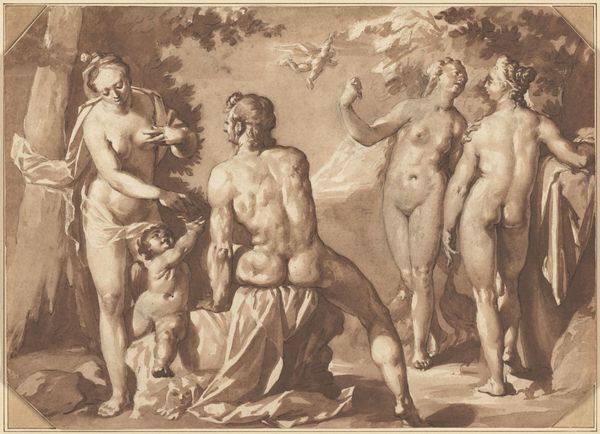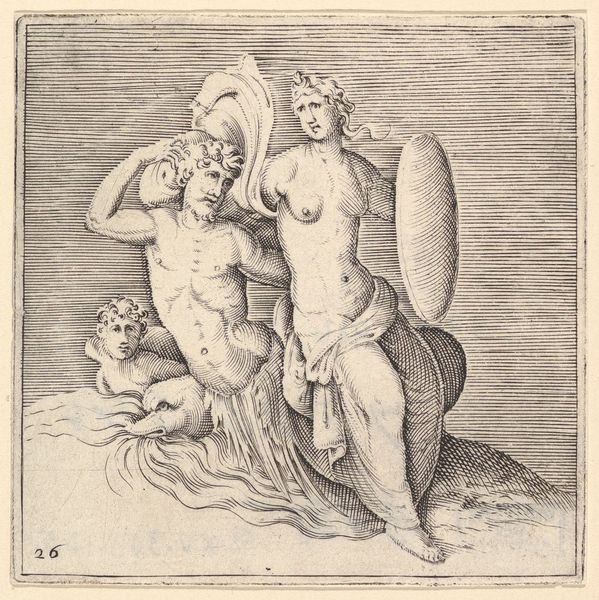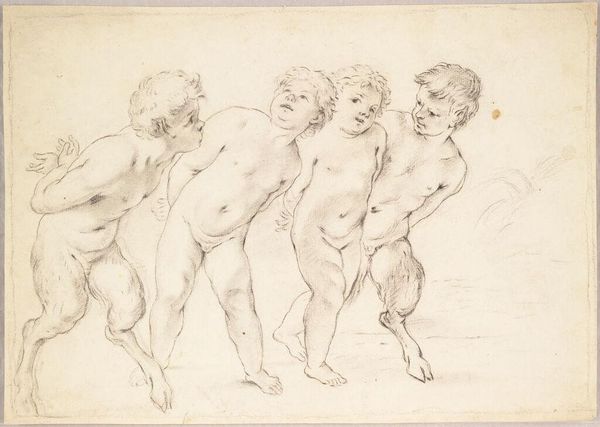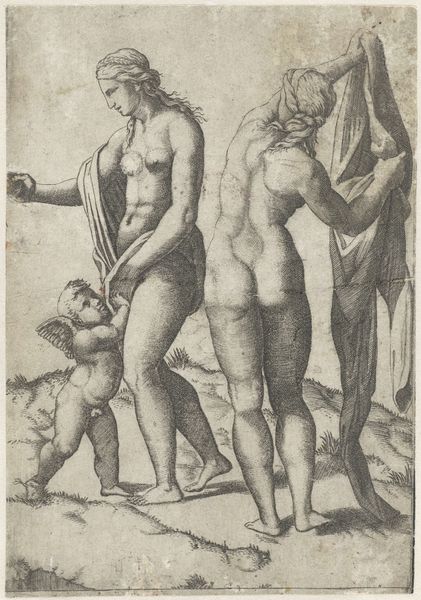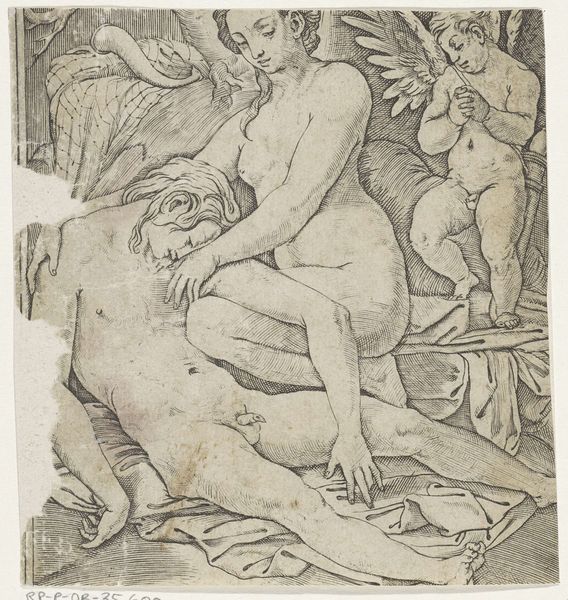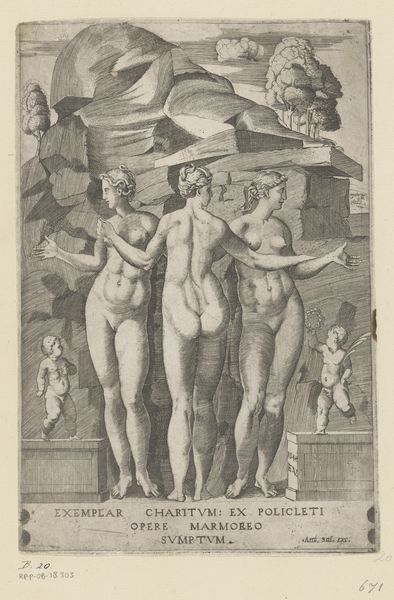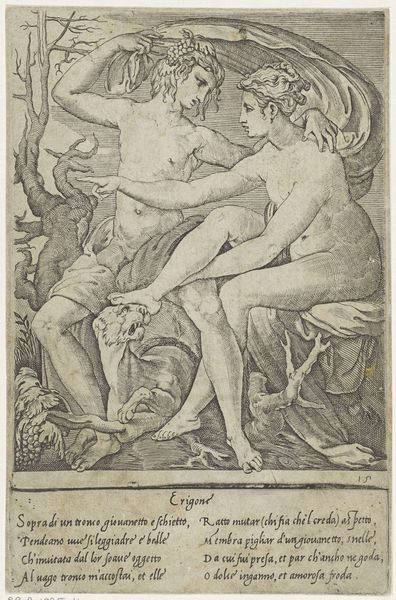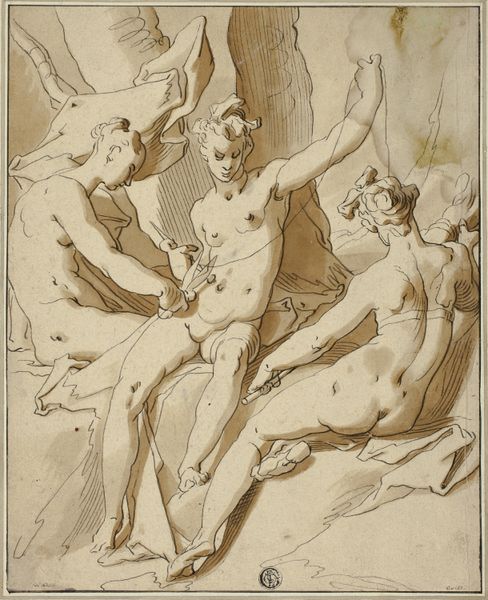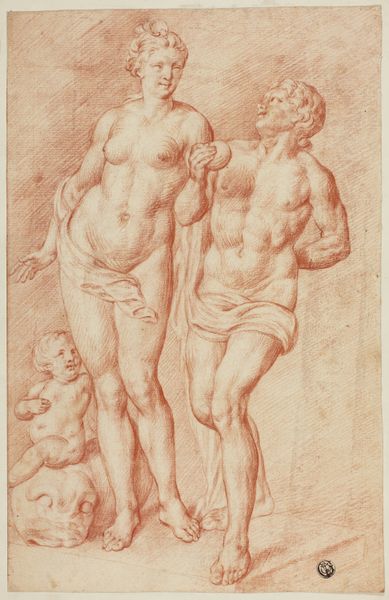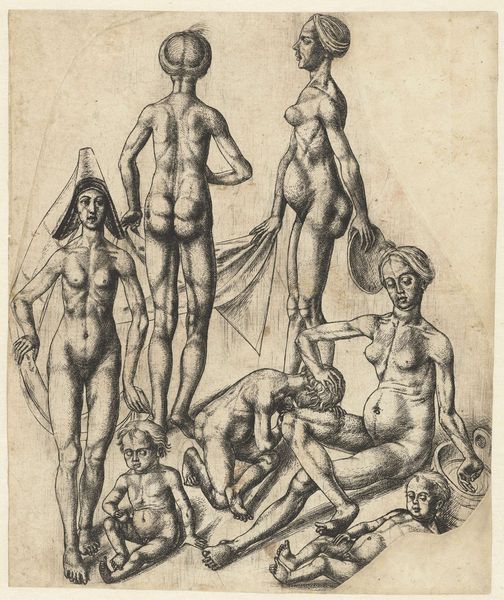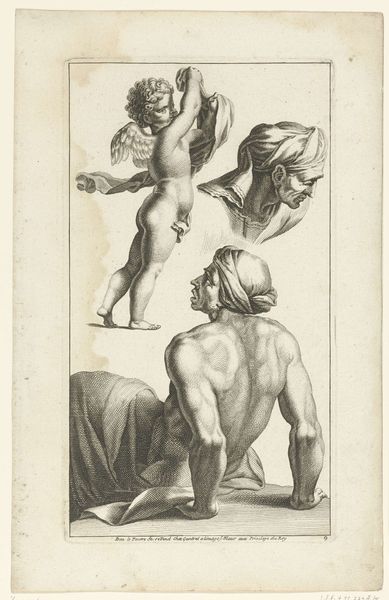
#
pencil drawn
#
toned paper
#
light pencil work
#
pencil sketch
#
personal sketchbook
#
pencil drawing
#
sketchbook drawing
#
portrait drawing
#
pencil work
#
fantasy sketch
Dimensions: height 186 mm, width 146 mm
Copyright: Rijks Museum: Open Domain
Curator: Here we have "Amor en de drie gratiën", or "Cupid and the Three Graces," a red chalk drawing attributed to Cornelis van Poelenburch, likely created sometime between 1600 and 1667. It's currently held here at the Rijksmuseum. Editor: My immediate reaction is one of intimacy and delicacy. The medium emphasizes the softness of the forms, but there’s something unresolved in the composition; it feels like a fleeting moment captured rather than a definitive statement. Curator: I agree. The artist places us in a narrative pulled from classical mythology. We have Cupid, the god of love, and the Three Graces—Aglaea, Euphrosyne, and Thalia—goddesses of charm, beauty, and creativity. The very inclusion of these figures signals a cultural memory, recalling Renaissance ideals of beauty and artistic inspiration that continue to shape European art. Editor: Yes, but notice how they interact, or rather, don't. The figures seem lost in their own worlds, yet subtly interconnected, gazing at each other or at something beyond the frame. Could this be a deliberate comment on relationships, even divine ones? Is it speaking about idealized representation of feminine beauty through male gaze and projecting expectations on women that cannot be attained in reality? Curator: It's intriguing how the arrangement creates this tension. They're united visually by the gentle strokes of red chalk, creating a certain ethereal quality and softness of human shapes, and their grouping, yet individualized by gaze and expression. But your reading digs deeper into feminist theory, questioning power dynamics in idealized representations which adds complexity to a familiar scene. What might the cupids symbolize in this picture? It certainly gives the observer a range of things to consider about this image. Editor: Symbolically, I read Cupid’s presence as the mediating force. The interplay of love, beauty, and grace hinges on him. His arrow, or the *potential* of his arrow, perhaps, is a pivotal detail in the traditional reading of this scene that is present here. Curator: This artwork certainly exemplifies the endurance of classical narratives, filtered through shifting social and cultural lenses. By putting contemporary ideas of intersectionality into context with art history, the impact that such work could have in shaping cultural memory starts to become clear. Editor: Indeed. Delving into its symbolism and understanding it within its historical context gives such greater insight into the emotional undercurrents embedded within seemingly simple compositions.
Comments
No comments
Be the first to comment and join the conversation on the ultimate creative platform.
